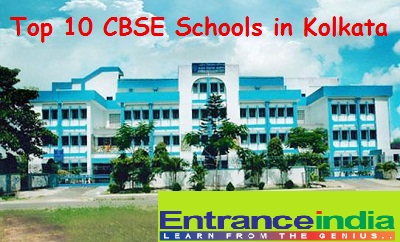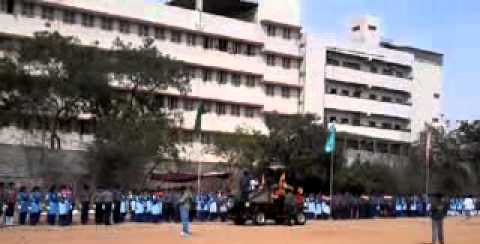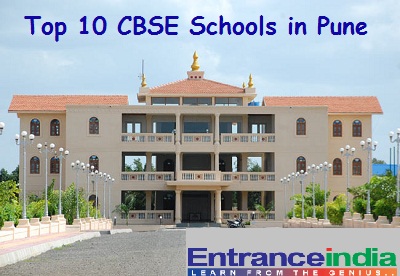CBSE Class 6 Science:
CBSE Class 6 Science syllabus can be widely classified as follows:
They are:
- Food
- Materials
- The world of living
- Moving things, people and ideas
- How things work
- Natural resources
The above topics are in detail below:
- Food:
Any typical food which we eat contains different ingredients which come from different sources such as plants and animals. Plants are the sources of vegetables, seeds, oil, fruits, etc whereas animals are the sources of dairy products, milk, meat and eggs.
The subtopics which are covered under this chapter are Components of food, sources of food and cleaning food.
Sources of food:
This topic covers what are the various sources of food that animals depend upon. What do the animals eat? Plant parts and animal products are the some examples of sources of foods.
As we all know, food is an essential thing for all kinds of living organisms. Every organism depends on other organism for making their food. For example, larger animals depend on smaller organism for their food, similarly human beings depend on animals for their food.
Plant food products:
Plant food products are the different types of food we get from the plants. Plant is the major source of food for vegetables, fruits, seeds and oils. Few of those examples are
Roots: We consume plant roots in the form of carrot, turnips, radish and beetroot.
Flowers: We consume flowers in the form of cauliflower, flowers of pumpkin and few kinds of roses are used to make edible oils.
Stem:
We eat stem related source of foods from plants such as coriander, sugarcane, potatoes, etc.,
Fruits:
We get many different types of fruits like fleshy or dry fruits. Fruits like mango, guava, orange, and apple are the important source of food from the plants.
Seeds:
We eat grains, pulses, ground nuts which are the important sources of foods in the form of seeds from the plants.
Leaves:
We eat leafy vegetables such as spinach, cabbage, curry leaves which are rich in calcium and vitamins.
Animal food products:
Just like plants, animals also make many kinds of foods that are very helpful for the human beings.
Milk:
Animals such as cow, goat, and buffalo are tamed in their own farms to produce milk from them. This is a rich source of food which is rich in calcium.
Eggs:
Birds like hen, duck are tamed and reared in their poultry farms for their eggs which is rich in protein.
Meat:
Animals such as goat, cow, pig, duck, sheeps are tamed to get flesh from them which is called as meat.
Dairy products:
Not only milk, but also other dairy products are made from the milk of animals such as cow, buffalo, donkey, goat, etc.,
Sea food:
Sea foods like fish, prawns, and crabs are also highly used foods for the human consumption.
Honey:
This is a product which is obtained from the Honey bee. Honey collects nectar from various fruits and flowers. Such nectars are collected together to form honey.
Components of food:
Any healthy food consists of six important nutrients such as carbohydrates, fats, vitamins, protein, minerals and water. These nutrients are much necessary to perform various metabolic activities.
Carbohydrates:
Carbohydrates are the compounds of carbon, hydrogen and oxygen and provide instant energy for the human body. Examples: rice, jowar, grains, etc.,
Proteins:
They are formed by the compounds such as carbon, hydrogen, oxygen and nitrogen. Protein is required to repair and damage the broken cells in the human body. Example: egg, milk, cheese, etc.,
Fats are made up of carbon, oxygen and hydrogen. Fat protects the skin from the rapid loss of heat. Example: Cheese, butter, oil, ghee Vitamins are the chemical substances that help in maintaining a healthy body. Example: Lemon, oranges, tomatoes, etc.,
Examples:
- Tiger is _______ animal since it eats only meat
Answer: carnivore
- Name two foods that are rich in starch.
Answer: Butter and Groundnuts
- Materials:
This chapter covers the various topics such as different types of cloth materials, types of plant fibres, and some concepts such as why candle shortens when lighten up, how does salt gets dissolved in a cup of water, etc.,
Fibres:
Cloth is a basic necessity for any human being to protect his body from the external environment. Such cloths are made up of different fabric materials such as wool, fibre, silk, leather, etc.,
Fibres are of two types such as natural fibre and synthetic fibre. Natural fibre are made from the natural sources of plants and animals such as cotton, jute, silk and wool. Synthetic fibre are man-made fibres which are not obtained from any plants and animals. Example: Nylon, polyster, etc.,
Properties of materials:
Every material has different property and nature. For example:
Metals:
Most of the metals are lustrous and shiny in nature. Thus, they are used in jewellery making. For example: Gold, silver, etc.,
Cotton:
The materials such as cotton or sponge are soft by nature. Thus they are used in making sarees, toys and other soft materials.
Plastics:
The nature of material is light and transparent sometimes. Thus, they are used in making bottles, jugs, play sets, etc.,
Wood:
This type of materials is opaque in nature which do not allow light to pass through them. Thus, cupboards are made up of wood.
Examples:
- State true or false:
- Is yarn made up of fibres?
Answer: True
- Name any two items that are made from the coconut fibre?
Answer: Bags and ropes
- The world of living:
This chapter covers the topics such as living and non-living beings characteristics, habitat of the living organisms and morphological structure and function of plants, bones and skeleton system of human beings.
Getting to know the plants:
Plants can be classified into different types according to their size and nature. They are as
Herbs:
Herbs are usually short and have a short period of life. They are mainly used in medicine to cure specific diseases.
Shrub:
This is taller than herb which lives for longer years. Examples are sunflower, rosemary, etc.,
Tree:
This is a woody plant that has many stems and branches. They prevent soil erosion, maintain carbon dioxide content in the air, and provide us wood and other materials to build up huts and houses. Creepers are the weak plants which cannot stand straight. They grow horizontally on the ground and live for very short period of time.
Body movements:
Human beings are able to move from one place to another with the help of their muscles, joints and limbs. Thus, the parts in detail
Joint:
Joint is a point at which two separate bones meet. There are three types of joints in the human beings such as fixed or immovable joints, slightly movable joints and freely movable joints.
Bones and skeleton:
Bones provide support to the structures in the body whereas Skeleton system of a human body is an internal framework of all the bones and cartilage in the human body.
Living organisms and the surroundings:
There are different types of atmosphere and seasons to which all kinds of living organisms must adapt.
Habitat:
Habitat of an organism is its immediate surroundings. There are two types of habitat such as Terrestrial habitat (Forest, grasslands, desserts, etc) and Aquatic habitat (Freshwater, ponds, lakes, etc.)
Adaptations:
The ability of any organism to adjust itself to the type of the surroundings is called as adaptation.
Characteristics of a living organisms:
All kinds of living organism require certain characteristics of life. They are they require food to exhibit growth, need to move, need to excrete, respire, reproduce and die.
These are the basic characteristics of any kind of living organism.
Examples:
- State true or false?
- The movement and locomotion of all kinds of animals are exactly same?
Answer: False
- Which of the skull bones are movable
Answer: Lower jaw
- Moving things, people and ideas:
This covers the topics such as need to measure the length and motion as change in the position of time.
Measuring length and its accuracy:
Length is a basic physical quantity which can be measure with the help of a scale and ruler. Length of a straight line can be measured with the help of a ruler whereas the curved line can be measured with the help of a non-stretchable string. In these ways you can measure any kind of object accurately.
Transportation and distances:
Moving from one place to another is called as transportation. Before walking was only means of transport which later developed into trains, cars, buses as the means of transportation. Nowadays, any kind of distances and lengths are covered with help of different means of transports.
Examples:
- One meter ___ in cm.
Answer: 100 cm
- The height of a person is 1.65m. Express in cm and mm.
Answer: 165 cm and 1650 mm
- How things work:
This chapter covers the topics such as conductors, insulators, components of an electric current, magnet, poles of an magnet, etc.,
Electric circuit:
Electricity basically needs a path to flow from the positive terminal to negative terminal of an electric cell. A connection which forms a path for this flow of electric current is called as electric circuit.
Conductors and insulators:
Materials that do not allow electricity to pass through them is called as insulators whereas materials which allow electric current to pass through them is called as conductors.
Example for insulators: Distilled water which means water at its purest form
Example for conductors: Tap water which means water with impurities
Properties of a magnet:
Substances which possess the property of attracting iron is called as magnet. The two ends of a magnet is called as poles which is called as north and south pole.
The properties of a magnet can be stated below as:
- A Magnet attracts magnetic materials towards itself
- Unlike poles attract each other whereas like poles repel each other
- When a bar magnet is rubbed over an iron bar, it changes the iron bar into magnet.
Examples:
- A device that is used to break an electric circuit is _____
Answer: Switch
- Paper is not a _______ material.
Answer: Magnetic
- Natural resources:
This chapter covers the topics such as natural calamities, conservation of water, forests, importance of water, etc.,
Natural calamities:
Natural calamities such as heavy rainfall, thunder, cyclone, flood and drought are the uncontrolled conditions which affect the areas of earth.
Floods:
Floods cause heavy loss to the human beings by uprooting crops, shelter, trees and so on.
Rainfall:
A heavy rainfall may result in flood which is as said above is a disastrous natural calamity.
Drought:
Drought is condition which has made the areas dry without rainfall and water. This is also a serious issue which may cause more deaths in the affected areas.
Conservation of water:
Water is a basic and important source for life and no life exist without water. Thus waters must be conserved in the following ways such as
- Avoid unnecessary water wastage
- Drinking water should not be used to water the plants
- Water bodies should be kept clean and must not be polluted.
- Destruction of trees must be avoided
- Every house must have implemented rain water harvesting system
Examples:
- Water drops appears on the outer surface of a glass containing cold water. This process is called as ________
Answer: Condensation
- Which gas in the atmosphere is essential for the respiration?
Answer: Oxygen
Thus, above are the topics which are covered in the syllabus of CBSE Class 6 Science.




